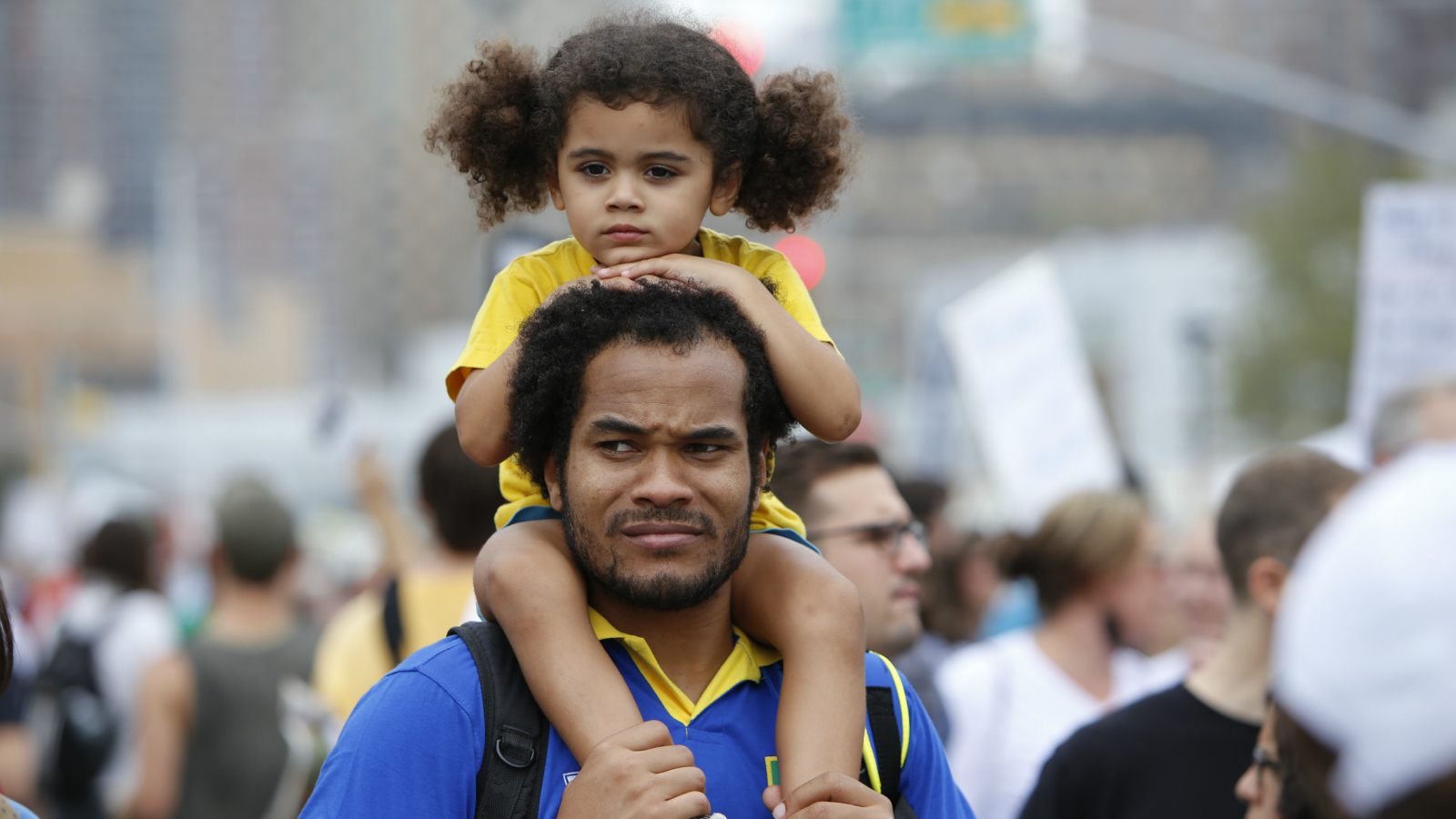Ever since taking power, the Trump administration has made clear it intends to wage war on the environment. It’s given the green light to both the Dakota Access and Keystone pipelines and geared up to wipe away long-standing protections that keep our air and water safe. Its mission is clear: Eliminate any obstacle that stands in the way of fossil fuel companies.
Yet I refuse to see this moment as a crisis. I see it as an opportunity to bring together people from different backgrounds and different areas of the country to start building a truly national movement to defend our environment. And the People’s Climate March, happening on April 29 in Washington, D.C., is where it will take off.
This movement will be led by those most affected by climate change and pollution: communities of color and working-class families. These are the communities that have always been hardest hit by under-regulated oil pipelines running through their towns. The ones closest to coal train routes, whose residents suffer from lung cancer at alarming rates. The ones whose children bear the most exposure to lead. Many working-class Trump voters, in fact, may come to regret their votes when environmental problems worsen in their backyards.
That is why I believe caring for the environment is not a Democratic or Republican issue. I think it’s an issue all voters can and will come to rally around in coming years as Trump’s policies hit home.
The good news is that the climate movement is in a better place to take on this challenge than it’s ever been. And it is getting stronger every day, fueled by young people and people of color who are growing increasingly empowered to speak up for the safety and health of their communities.
The opposition to the Keystone Pipeline helped galvanize this movement into action. For years, pipelines had been approved around the country with only a passing glance at their effect on the local community, local wildlife, and local history. Keystone marked a turning point, showing that a unified, broad opposition could stymie plans for a pipeline.
Keystone planted the seeds, but Standing Rock is when the movement truly bloomed, bringing together thousands of people from every corner of the country to block a pipeline that threatens ancient water sources and blatantly disregards treaties with sovereign First Nations. By making a powerful argument that wove together environmental, racial, and economic justice, water protectors were able to attract both die-hard climate activists and allies brand-new to the cause.
This intersectionality will be the hallmark of the movement in coming years, and it will be our strength. That is why the People’s Climate March is so important. It’s not just about sending a message to Washington that we won’t stand for their agenda. It’s about sending a message of unity that crosses color lines and income scales. It’s about demonstrating the diversity of the climate movement, the diversity that gives us our strength.
But the work can’t and won’t end with a march. Already, community groups in states and cities across the country are banding together to fight the worst damage expected from the Trump administration. In Florida, Missouri, New York, and Virginia, they are looking for ways to elevate fights over local pipelines into the national debate. In cities like Seattle and New York, they are pushing their elected leaders toward divestment from the funders of the Dakota Access Pipeline. And nationally, they are mobilizing to prevent giveaways to oil, gas, and coal companies in any national infrastructure package.
Climate can no longer be a fringe issue. It must be an essential part of any resistance that fights racism and economic inequality, because the environment we live in affects those issues intimately. Air filled with smog raises the risk of lung disease, cutting life expectancy. Water filled with lead forces our children to grow up with learning defects that limit their ultimate earning potential. And workplaces filled with safety hazards make it more likely that workers — not employers — bear the cost of any accidents.
There is no plan B when it comes to our planet. It is a precious resource and it cannot be taken for granted. We must fight for it, today and for the years to come. The People’s Climate March is just one small step on this path.




